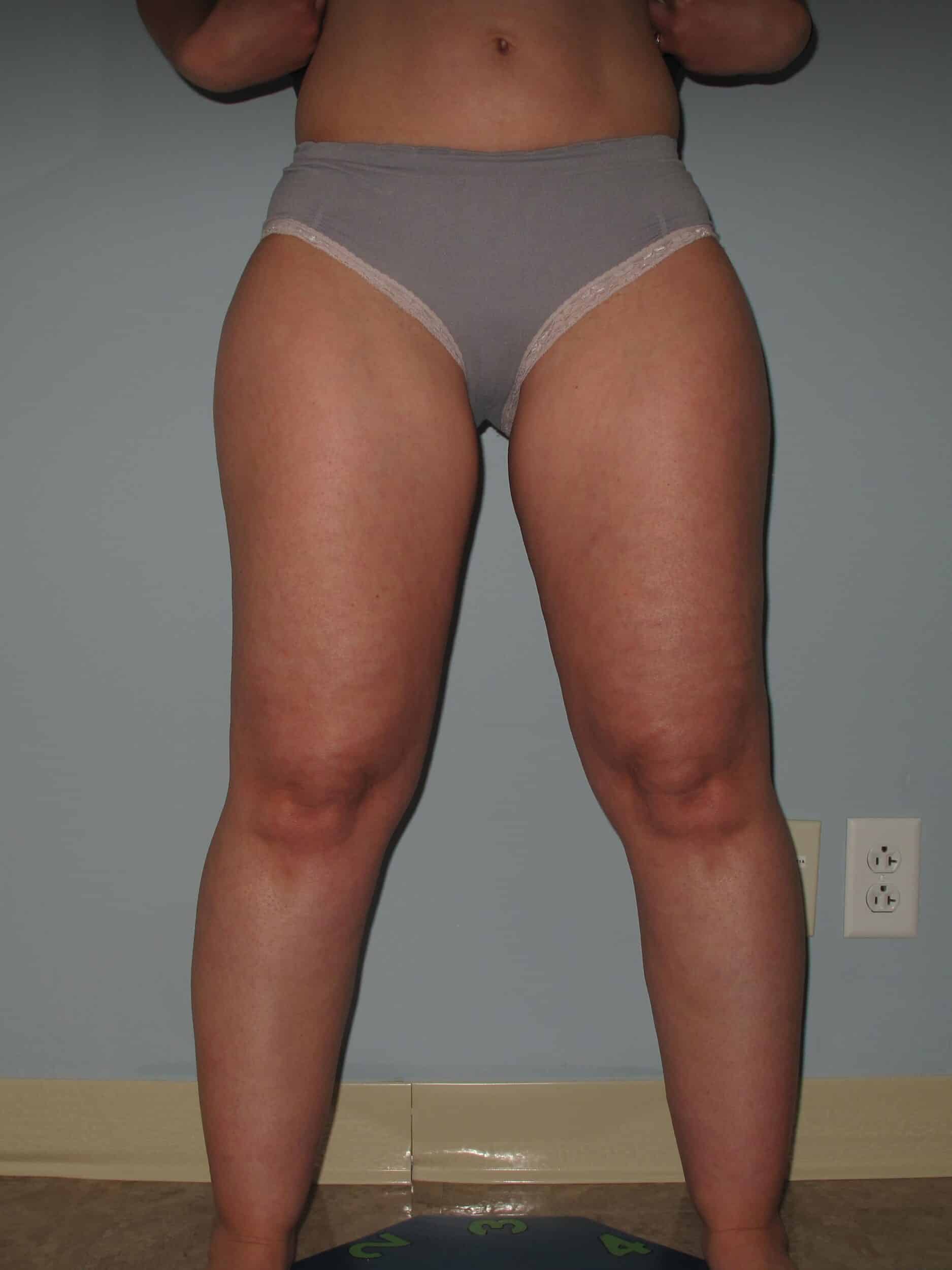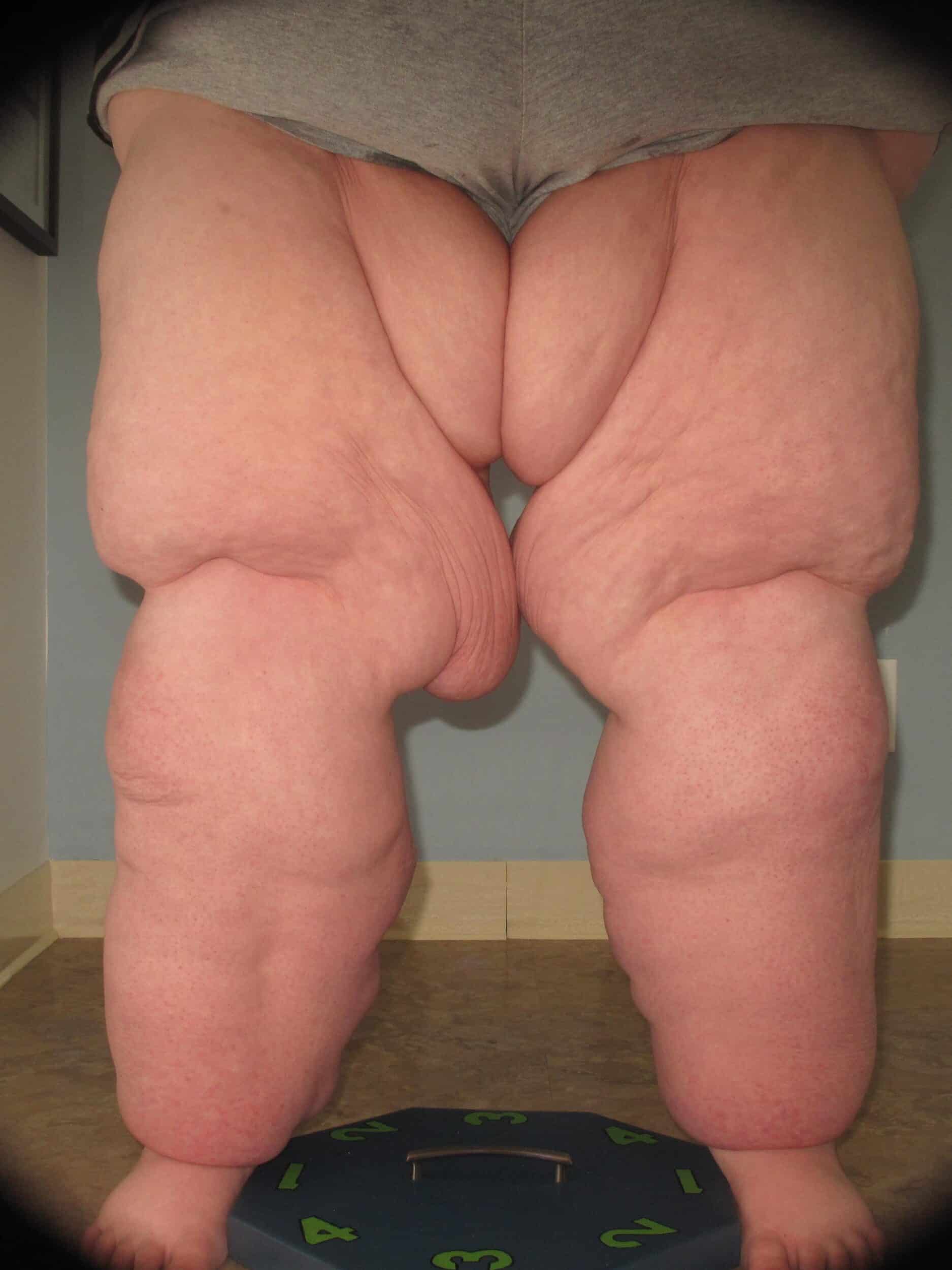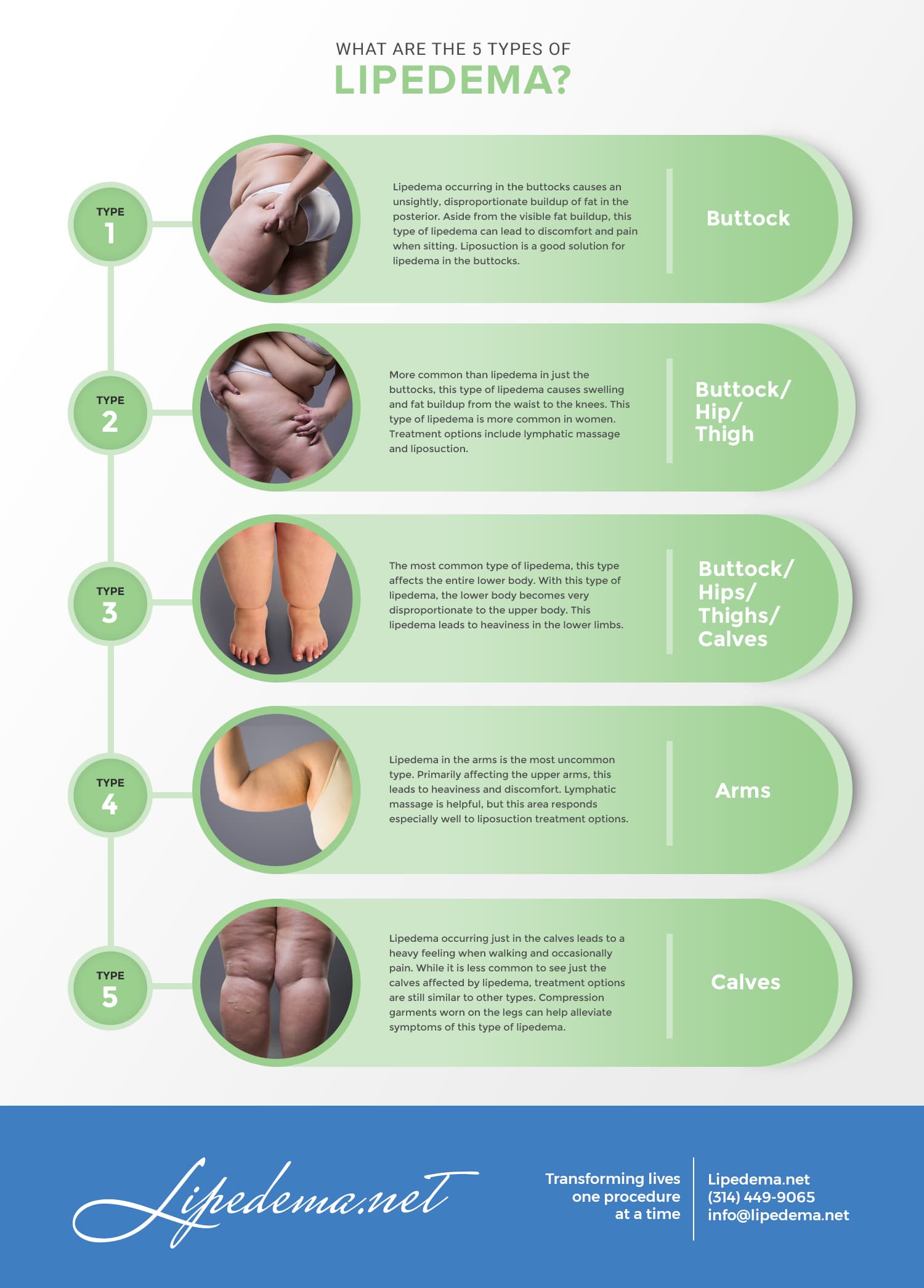Brief History
Lipedema is a disorder of subcutaneous fat that primarily affects the extremities, is influenced by hormones, and often affects lymphatic circulation. It was first identified in 1940 by Vascular Doctors Edgar Allen and Edgar Hines at the Mayo Clinic in Rochester, Minnesota. Unfortunately, awareness of the disease is more well known in Europe, and physicians and the general population in the United States are still not very familiar with it. There is a growing awareness, understanding, and new appreciation of the importance of early diagnosis and treatment of it in the US, which we’re hoping to continue to advocate for.
Causes of Lipedema
The exact cause of lipedema (international spellings: Lipodema, Lipoedema, or Lipodem) is not known, but the condition is genetically linked and occurs almost exclusively in women. Lipedema is a fat disorder that only affects subcutaneous fat (the fat between the skin and muscle). It primarily affects the fat of the extremities – legs and arms.
Five Types of Lipedema
First described by Myer and Volarath in 2007, the type of Lipedema disorder is determined by the area of the body that is affected, broken down into five types.
- Type I – affects the buttocks
- Type II – affects the buttocks, hips, and thighs
- Type III – affects the buttocks, hips, thighs, calves
- Type IV – affects the arms
- Type V – affects the calves
Some women will also develop lipedema fat on their lower abdomen and lower back, which does not quite fit into the current classification of lipedema types.
Lipedema Fat is Different
What is Lipedema fat and how is it different from normal subcutaneous fat in many ways?: it is disproportionate, it accumulates in excess in selected areas, depending on the type, and it accumulates out of proportion to the rest of the body. This gives lipedema sufferers the two-body syndrome – for example, a slim upper body but a significantly larger lower body. It is not unusual for someone with lipedema to be a size 4 top and size 14 bottom. Lipedema is under the significant hormonal influence and rarely occurs before puberty. It is often affected by hormonal milestones such as pregnancy, menopause, gynecological surgery affecting the ovaries, and other hormonal changes. Lipedema fat is highly resistant to weight loss.
Lipedema Inflammation
Lipedema fat goes through inflammatory changes. Early on lipedema fat is actually softer and fluffier than normal subcutaneous fat. As lipedema progresses the fat goes through inflammatory changes becoming firmer and more nodular and the areas become tender and swollen. Over time the fat becomes fibrous and nodular and it starts to feel like beans in a bean bag. In more advanced stages the fibrous bands create nodules and valleys.
Prevalence
Lipedema is not a rare disorder. Rather it is a rarely recognized disorder. The highest estimate is that 11% of the female population is affected by lipedema but the range is from less than 1% to 11% percent of the female population.1
Approximately 60% of the time lipedema affects the upper extremities[ Type 4 ]. 2 At least 14% of lipedema patients have a close family member with lipedema. 2



Stages of Lipedema
First described by Schmeller in 2004, there are 3 stages of Lipedema that describe the progression of the disease. In addition, there is also a progression of lipedema to overt lymphedema. The stages of the disease should not be confused with the types of Lipedema, which describes the areas of the body which are affected by Lipedema.
Stage I:
The fat under the skin is enlarged in the affected area. The skin is soft and smooth, however fine nodules can be found here. In the affected area, there may be swelling during the day that resolves with rest and elevation. Symptoms of tenderness or heaviness generally improve with elevation.
Stage II:
Firm, subcutaneous, almond to walnut-sized nodules develop making the fat feel tough and as the fat begins to harden it continues to increase in size. The skin surface becomes uneven and develops indentations and protrusions which can look early on like cellulite. Lipomas, which are fibrous fatty lumps may appear between the skin and the underlying muscle. Depending on the type of lipedema large fatty deposits begin to form on the upper and lower legs, around the ankles and or arms. The symptoms of swelling and tenderness continue to increase during the day, however, they don’t completely resolve with rest and elevation.
Stage III:
Large masses of fat and fibrous tissue cause characteristic deformations in the thighs. Knees ankles and/or around the elbows depending on the type of lipedema. There is more hardening of connective tissues and the swelling becomes consistently present and does not resolve with rest and elevation. The symptoms of pain and swelling become more severe and may limit activity. The deformities from the fat hypertrophy may also limit mobility.
Secondary Lymphedema
Lymphedema and lipedema are separate medical disorders, however, there is some overlap. For example, both cause swelling. Lymphedema typically occurs in one extremity – not both. However, in the case of secondary lymphedema, it is secondary to a disease such as lipedema and it usually affects both extremities equally. All stages of lipedema have some swelling. At the more advanced stages II and III, secondary lymphedema occurs when the localized swelling overwhelms the lymphatics system to clear lymph fluid, which is a clear acellular fluid created in the tissues. With the progression to secondary lymphedema, the swelling extends to the feet and or hands depending on the type of lipedema. This is also called Lipo-Lymphedema. There are several factors that affect the progression of secondary lymphedema. As fibrosis progresses it affects lymphatic vessels. As the fat hypertrophy progresses and the area of the deforming accumulation around the ankles, knees, and inner thighs and elbows occurs, they can create an obstruction to normal lymph flow. Lipo- Lymphedema can lead to an acceleration of the lipedema as the lymph circulation is responsible for clearing lipids and free fatty acids from the tissue it drains, so as the lymphatic circulation worsens, there is an increase in fat deposition in the tissue. Obviously, this can lead to a vicious cycle of worsening disease and symptoms unless there are interventions to change the course.
Common Synonyms for Lipedema
- Adiposis dolorosa
- Lipomatosis dolorosa of the legs
- Lipodystrophia dolorosa
- Painful Swollen Fat Syndrome
- Painful column leg
- Lipoedema[ Brittish Spelling]
- Lipödem [German Spellling]
- Lipalgia
- Adiposalgia/Adipoalgesia
- Lipomatosis dolorosa
- Lipodystrophia dolorosa

Codes for Lipedema
ICD-9 457.1 “lymphedema” if there is a swelling component
272.8 “lipomatosis”
ICD-10 Q82.0 “hereditary lymphedema” https://www.icd10data.com/ICD10CM/Codes/Q00-Q99/Q80-Q89/Q82-/Q82.0
Mesh DO65134. MeSH terms are used for Medline / National Library of Medicine Searches
For more information on Lipedema please visit FatDisorders.org for some valuable information.
